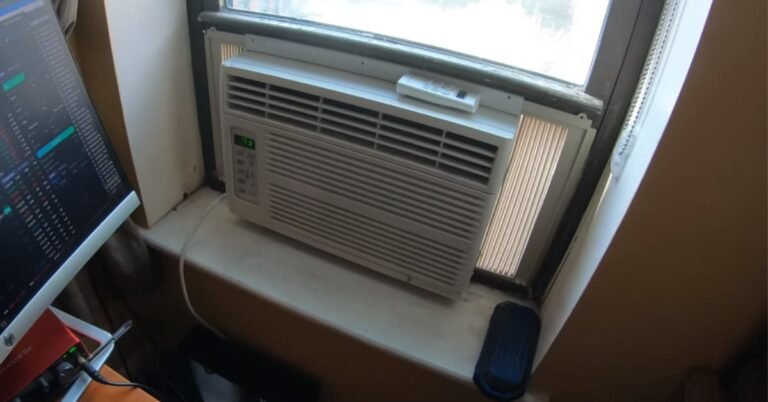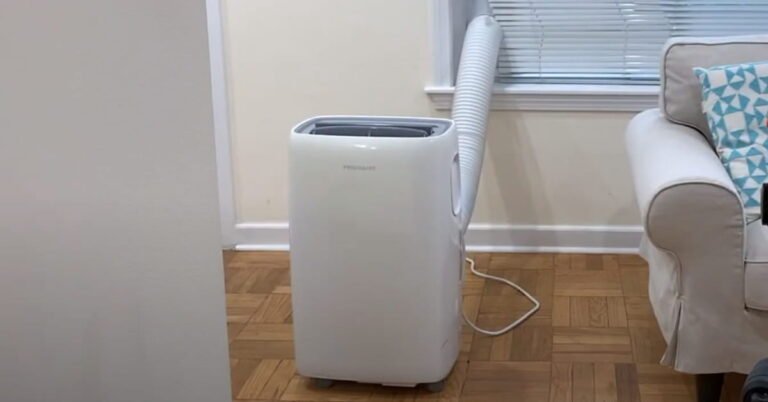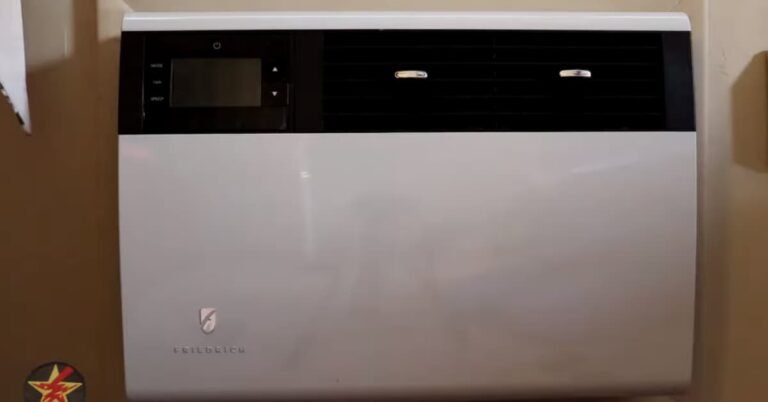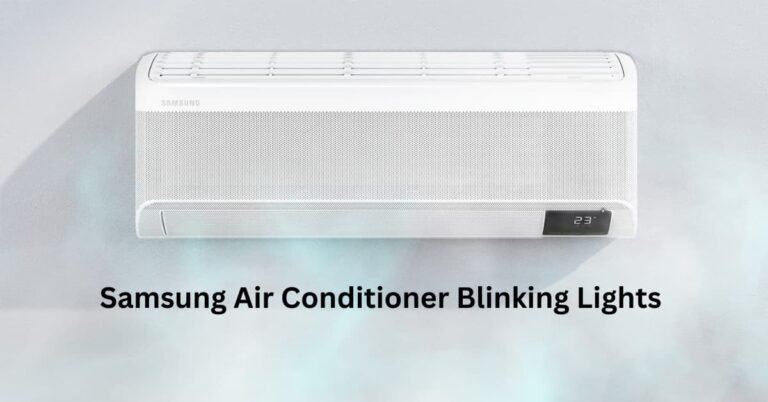Lg Portable Air Conditioner Troubleshooting Manual
LG portable air conditioners come with a range of features and functions that help provide optimal cooling and comfort.Like any appliance, it can sometimes have issues. In those moments, a reliable troubleshooting guide is essential for diagnosing and fixing the problem.
This article will address common issues with LG portable air conditioners, such as failure to start, insufficient cooling, extended cooling times, and E1 or CH error codes.
With clear instructions, we help you resolve air conditioner issues and restore your comfort quickly.
Lg Portable Air Conditioner Troubleshooting Manual
When encountering issues with your LG portable air conditioner, fear not. This concise troubleshooting manual, packed with easy-to-follow solutions, will assist you in addressing common problems. You’ll be back to enjoying a cool and comfortable environment swiftly and effortlessly.
1. Air Conditioner Does Not Start
If your LG portable air conditioner won’t start, it can be frustrating, especially in the sweltering heat. Possible reasons include power issues, timer settings, or faulty components.
To fix the issue, thoroughly examine and troubleshoot the air conditioner step by step to identify the root cause.
How To Fix?
1. Check the power supply: Ensure the unit is properly plugged into an electrical outlet and the power cord is not damaged. Make sure the outlet is functioning by plugging in another device.
2. Inspect the circuit breaker: If the outlet is not working, check your home’s circuit breaker or fuse box. Reset the breaker or replace the fuse if needed, and try plugging the air conditioner back in.
3. Examine the timer: Verify that the timer has not been accidentally set, which would delay the unit from turning on. Refer to your manual to reset the timer settings if needed.
4. Contact customer support: If none of these steps work, the unit might be experiencing a more complex internal issue. Contact LG customer support for assistance or to schedule a service appointment.

2. Air Conditioner Doesn’t Cool Correctly
A well-functioning air conditioner should cool your space efficiently. When your LG portable air conditioner fails to cool properly, it misses its primary purpose. This issue can result from incorrect settings, improper installation, or an obstructed airflow.
The following steps will help you identify the cause and correct the problem.
How To Fix?
1. Check the thermostat: Make sure that the thermostat is set to cool mode and is set at a temperature lower than the room temperature.
2. Assess the air filter: A dirty or clogged air filter can impair the unit’s cooling performance. Clean or replace the air filter according to your manual’s instructions if needed.
3. Review installation: Ensure that the unit is installed correctly per the manual. The exhaust hose should be correctly connected and vented to the outdoors.
4. Inspect the air vents: Check for any obstructions near the air inlet or outlet vents and clear the area to provide unobstructed airflow.
5. Schedule a maintenance check: If the steps above don’t resolve the issue, contact LG customer support to schedule a maintenance check for possible refrigerant leaks or other internal issues.
3. Unit Takes Too Long to Cool
A portable air conditioner’s cooling efficiency is crucial to maintaining a comfortable living environment. If your LG portable air conditioner takes too long to cool your space, it can lead to discomfort. This problem can stem from improper unit sizing, poor insulation, or an overworked compressor.
The following steps will help you address this issue.
How To Fix?
1. Verify unit size: Ensure that your air conditioner is the right size to cool your room. An undersized unit will struggle to keep up with cooling demands. Consult your manual to know if your unit is appropriately sized.
2. Check room insulation: Assess your room’s windows and doors for drafts and seal any gaps to improve insulation, preventing the cooled air from escaping.
3. Assess the compressor: The compressor could be overworked and unable to provide sufficient cooling. In this case, turn off the air conditioner, unplug it, and let it rest for a few hours before trying again. If the problem persists, contact LG customer support to assess the compressor.
4. E1 or CH Error Codes
The E1 or CH error codes displayed on your LG portable AC indicate issues with the unit’s sensors or communication system. These errors can interfere with the unit’s cooling efficiency, making it essential to address them promptly.
The following instructions will guide you through identifying and troubleshooting the error codes.
How To Fix?
1. Reset the unit: Unplug your air conditioner for at least 30 seconds, and then plug it back in. This may clear the error code and resolve the issue.
2. Inspect the sensors: Check the sensors inside the unit (as detailed in your manual) for any damage or issues. Clean the sensors gently if they appear dirty.
3. Schedule a service appointment: If the error code persists, it may indicate an internal fault with the unit’s sensors or communication system. Contact LG customer support for professional assistance or to schedule a service appointment.

5. Foul Smell Coming from the Air Conditioner
A foul smell from your portable air conditioner can be unpleasant in your living space. The odor might be a result of a dirty filter, trapped moisture, or accumulated dust and debris.
It is essential to identify the source of the smell and address it promptly to maintain clean and fresh indoor air.
How To Fix?
1. Check the air filter: Inspect the air filter for dirt and debris. Clean or replace the filter according to your manual’s instructions if required.
2. Clean the unit: Regularly clean the unit’s exterior, including the air intake and exhaust vents, to prevent a buildup of dust and dirt.
3. Inspect the drain pan: Check for clogged drain pans that may be harboring stagnant water or trapped moisture, which can lead to odors. Clean the drain pan and ensure it is properly draining.
4. Dehumidify: Run the air conditioner in dehumidifying mode for a few hours to reduce excess moisture, which may contribute to musty odors.
5. Use a disinfectant: Use a mild disinfectant spray on the air filter and interior of the unit to eliminate bacteria and fungi that can cause odors.
6. Unit is Noisy
A noisy LG portable AC can detract from your comfort and overall enjoyment of your living space. The noise may stem from loose parts, improper installation, or an internal component issue.
Diagnosing and addressing the noise source is crucial to restoring a peaceful environment in your home.
How To Fix?
1. Ensure proper installation: Review your installation to make sure the unit is positioned correctly and securely. Also, ensure the exhaust hose is correctly connected and not blocked.
2. Check for loose parts: Inspect the unit’s exterior for loose or rattling parts, and tighten any screws or fasteners as needed.
3. Examine the air filter: A dirty or warped air filter can cause noise. Clean or replace the filter according to your manual’s instructions if required.
4. Inspect fan blades: Check the air conditioner’s fan blades for damage, warping, or debris, which can contribute to excessive noise.
5. Contact customer support: If the noise persists, there may be an issue with the compressor or another internal component. Contact LG customer support for further assistance or to schedule a service appointment.
7. Water Leaking into the Room
A water leak from your LG portable AC can damage your home and furnishings, so it’s crucial to address this promptly. Leaks can result from improper installation, clogged drain pans, or excessive humidity.
The following steps will help you identify the source of the leak and resolve it accordingly.
How To Fix?
1. Verify proper installation: Ensure that the unit is installed per the manual’s instructions, with properly connected exhaust hoses and level positioning.
2. Check the drain pan: Inspect the drain pan for clogs or blockages that may prevent proper drainage of condensation from the unit. Clean the drain pan as needed.
3. Examine seals and hoses: Look for any leaks in the exhaust hose or seals around your windows and doors where the air conditioner is venting. Repair or replace damaged components as necessary.
4. Use a dehumidifier: If the leak is due to excessive humidity, run your air conditioner in dehumidifying mode to reduce moisture in the room.
5. Schedule maintenance: If the issue persists, contact LG customer support to schedule a maintenance appointment to address the water leak problem.
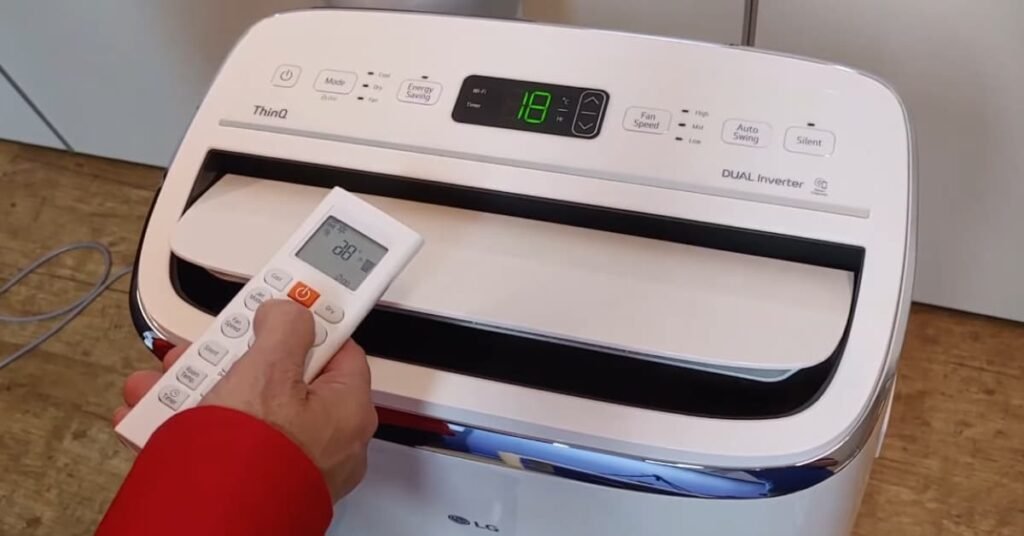
8. Remote Control Isn’t Working
Controlling your LG portable air conditioner with a remote is simple and convenient. When the remote isn’t working properly, it can be inconvenient.
The reasons for a malfunctioning remote control can range from dead batteries to signal interference.
How To Fix?
1. Replace the batteries: Try replacing the batteries in the remote control first. Always use new, high-quality batteries.
2. Ensure line-of-sight: Confirm that nothing is blocking the path between the remote and the air conditioner. The remote’s infrared signal requires a clear line to the unit.
3. Check the distance: Ensure you are not too far from the unit to exceed the remote’s range.
4. Reset the remote: If none of the above solutions works, attempt to reset the remote control by removing the batteries, waiting a few minutes, and then re-inserting them.
5. Contact customer support: If all else fails, reach out to LG customer support for further guidance.
9. Unit Blows Out Warm Air
An LG portable air conditioner blowing warm air is puzzling and uncomfortable, especially in hot weather.
The issue may be due to incorrect settings, a dirty filter, or refrigerant problems.
How To Fix?
1. Check settings: Verify the unit is set to the ‘cool’ mode and not mistakenly set to heat.
2. Inspect the air filter: A clogged filter can impair proper cooling. Clean or replace it if necessary.
3. Check the exhaust hose: Ensure that the hose is properly connected and heat is being exhausted outdoors.
4. Call for service: If warm air persists, your unit could have a refrigerant leak. Contact LG customer support for assistance.
10. Air Conditioner Vibrates
Your LG portable air conditioner is expected to be operated quietly and smoothly. When the unit vibrates, it might indicate an issue that needs to be addressed.
Reasons for vibration can range from unlevel installation and loosened components to an internal imbalance.
How To Fix?
1. Check the installation: Ensure the unit sits level on the floor. An uneven setup can cause the unit to vibrate.
2. Inspect the parts: Loose parts can lead to vibration. Tighten screws appropriately and clear any debris in the vents.
3. Check the air filter: A dirty or improperly seated air filter can cause vibrations. Clean or replace it if necessary.
4. Contact professional service: If the vibration persists, you may have a more complex internal issue. Get in touch with LG support for further assistance.

11. HE Error Code Appearing
An HE error code on your LG portable air conditioner can be unsettling. It indicates an issue with the heating system of the unit.
Though it seems intimidating, there are several troubleshooting approaches you can take.
How To Fix?
1. Power off and on: Restart your air conditioner unit. This often clears minor technical glitches.
2. Check for obstructions: Inspect the air intake and exhaust vents for obstructions. Remove any clutter found.
3. Reset the temperature: Ensure that the desired temperature is set higher than the current room temperature.
4. Call for assistance: If the HE code still appears, reach out to LG customer support for further guidance or a service appointment.
12. Fluctuating Room Temperatures
An LG portable air conditioner efficiently stabilizes room temperature.
If you notice fluctuating temperatures in your living space, it could signify several potential issues, such as incorrect settings or sensor problems.
How To Fix?
1. Check the settings: Verify that your unit is set to the correct ‘cool’ mode and desired temperature.
2. Ensure windows and doors are closed: Check to confirm that all windows and doors are appropriately sealed, as outside air can cause temperature fluctuations.
3. Examine the sensor: The sensor might be malfunctioning. Refer to your manual to locate and inspect the sensor.
4. Reach out for professional aid: If none of the above steps resolve the issue, contact LG’s customer service for further aid.
13. The Fan Runs, But Compressor Does Not
In a properly functioning LG portable AC, the fan and compressor should work synchronously.
When the fan runs while the compressor isn’t, it might indicate a variety of issues including incorrect settings or a potential compressor failure.
How To Fix?
1. Ensure proper setting: Verify that your unit is set on the ‘cool’ mode and not just the ‘fan’ mode.
2. Check the thermostat: The set temperature should be lower than the current room temperature to activate the compressor.
3. Inspect power supply: Make sure that the unit is adequately supplied with power. Check the power cable and outlet.
4. Request professional help: If the compressor still doesn’t run, you may need a professional technician’s help. Contact LG customer support for troubleshooting assistance.

How Do I Reset My Lg Portable Air Conditioner?
If you’re experiencing issues with your LG portable air conditioner, a simple reset may help resolve the problem. Follow these steps to reset your unit and restore smooth operation:
1. Power off your air conditioner using the designated power button.
2. Unplug the unit from the power source, disconnecting it from the wall outlet.
3. Allow the unit to remain unplugged for 1-2 minutes, giving it time to discharge any stored electrical charge.
4. Plug the air conditioner back into the power outlet, and then turn it back on.
5. Check to see if the issue has been resolved; if not, consult your user manual or contact LG customer support for further assistance.
How Do I Clean My Lg Portable Air Conditioner?
Proper cleaning of your LG portable AC is crucial in maintaining its performance and air quality. Follow these steps to effectively clean your unit and keep it running at its best:
1. Turn off the unit and unplug it from the power source to ensure safety during cleaning.
2. Remove the air filter, typically located behind the front grille of the unit.
3. Gently vacuum the air filter to remove dust and debris; followed by washing it with warm water and mild soap.
4. Allow the air filter to air-dry completely before reinserting it.
5. Using a moist, lint-free cloth, wipe down the exterior surface of the air conditioner, including the inlet and outlet grilles.
6. Carefully clean the condenser coils at the back of the unit with a soft brush or vacuum cleaner attachment, ensuring you don’t damage the fins.
7. If applicable, empty and wash the water collection tray with warm, soapy water.
8. Reassemble all the parts, plug the unit back in, and continue enjoying cool, clean air.
How Often Should I Clean The Filter?
Regularly cleaning the filter is essential for maintaining optimal performance and air quality in your LG portable air conditioner. Use below tips to clean the filter:
1. Assess your air conditioner usage and the environment it operates in to determine the filter cleaning frequency.
2. Plan to clean the filter every 2-4 weeks; conditions with more dust, pollen, or pollutants may require more frequent cleaning.
3. Implement a habit of checking the filter biweekly, looking for signs of clogging or dirt accumulation even if you don’t plan to clean it.
4. Adjust the filter cleaning schedule as necessary based on the unit’s performance, ensuring optimal efficiency and indoor air quality.
5. Remember that maintaining a clean filter is essential for the overall health and performance of your LG portable air conditioner.
Conclusion
LG portable air conditioners are efficient in maintaining comfort. They can occasionally encounter issues like error codes, temperature fluctuations, or compressor problems.
This troubleshooting guide empowers you to address these concerns effectively, ensuring that your unit operates at its best. When in doubt, consult your product manual or contact LG customer support for professional advice.
By proactively addressing small issues, you’ll maximize the performance and longevity of your LG portable air conditioner, ensuring your comfort and adding value to your investment.

